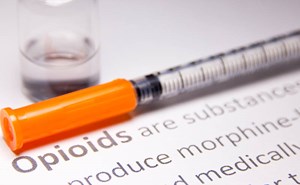This week is EMS week™, which gives all of us an opportunity to thank our frontline providers for their hard work and sacrifice as they have answered the call of duty during the COVID-19 pandemic. Our first responders and other emergency professionals, including emergency physicians like yourselves, have faced the unique challenge of treating patients using different protocols and procedures to ensure that everyone remains protected and safe. This extends to the treatment of opioid use disorder (OUD), which, if anything, has only become more prevalent during the pandemic as anxiety and stress are at particularly high levels—potentially causing more relapses and new opioid users.
Ensuring that medical professionals have the tools and flexibility they need to appropriately treat patients with OUD during the pandemic is essential. From a regulatory perspective, federal agencies such as the Drug Enforcement Administration (DEA) and the Substance Abuse and Mental Health Services Administration (SAMHSA) have taken steps to reduce barriers and provide additional flexibility. The DEA has adopted protocols to allow DEA-registered practitioners to prescribe controlled substances to their patients without having to interact in-person with their patients. Under the DEA’s policy (which became effective on March 31), authorized practitioners can prescribe buprenorphine over the telephone to new or existing patients with OUD without having to first conduct an examination of the patient in person or via telehealth. Further, SAMHSA released guidance for law enforcement and first responders administering naloxone, which recommends intranasal naloxone administration and the use of personal protective equipment (PPE) to protect first responders.
While these actions are great first steps in protecting both patients and medical personnel and reducing barriers to OUD treatment during the pandemic, more needs to be done. The American Medical Association (AMA) has released a set of policy recommendations on OUD treatment, one of which is that states across the country should follow the DEA’s lead regarding remote buprenorphine prescribing and modify their controlled substances policies to incorporate this flexibility. The AMA also recommends that payors waive cost-sharing and prior authorization for medications used to treat addiction, including buprenorphine, methadone and naltrexone and allow for 90-day buprenorphine prescriptions.
Going forward past the pandemic, we hope that many of the barriers to OUD treatment will be permanently removed. As discussed in previous blogs, we have strongly advocated for both regulatory and legislative changes to make it easier for emergency physicians to initiate medication-assisted treatment (MAT) in the emergency department (ED). We continue to believe that a significant barrier to treatment is the federal “X-waiver” requirement which mandates that physicians wishing to prescribe buprenorphine outside of opioid treatment programs must take an eight-hour course and receive a DEA waiver. Therefore, ACEP supports H.R. 2482, the “Mainstreaming Addiction Treatment Act of 2019,” which would remove the X-waiver requirement.
Further, on the regulatory side, we strongly support a modification to the current “three-day rule,” which requires providers to administer buprenorphine one day at a time, and forces patients to come back to each day to receive treatment in the ED or other care settings. EDs (even without having clinicians with X-waivers) should be able to dispense a three-day supply of buprenorphine or administer a dose which will last for at least three days. Finally, we recognize that the reimbursement of MAT has been an issue, and we remain hopeful that Medicare will start reimbursing for MAT in the ED in the near future.
We have our work cut out for us, but now, even more than ever, we have to ensure that patients suffering from OUD get the necessary treatment—and that all medical personnel have the flexibility and resources they need to do their jobs. Before concluding, I would be remiss if I didn’t mention another barrier to OUD treatment: the stigma associated with the disease. I was proud to have participated in a summit in January hosted by ACEP focused on addressing opioid stigma in the ED. ACEP recently released an excellent video highlighting key actions and concepts that were discussed during the summit. I encourage you all to check it out!
Until next week, this is Jeffrey saying, enjoy reading regs with your eggs!






